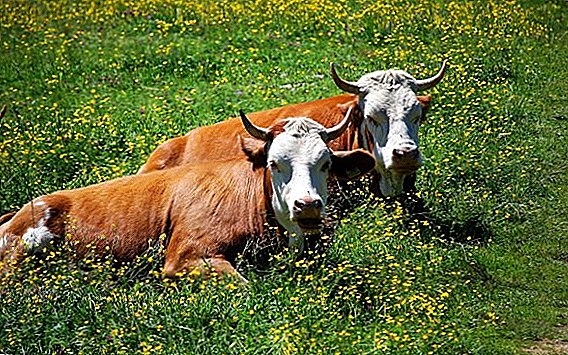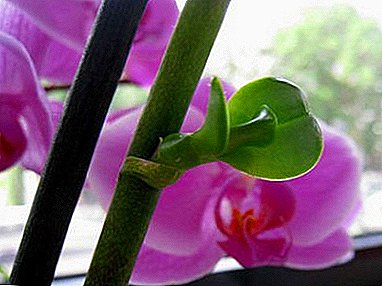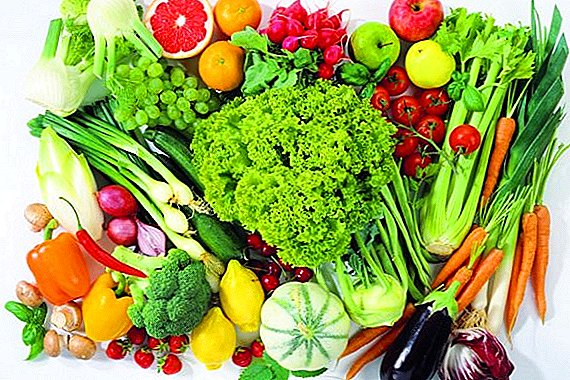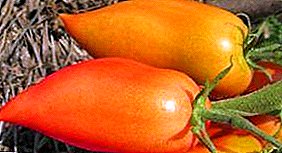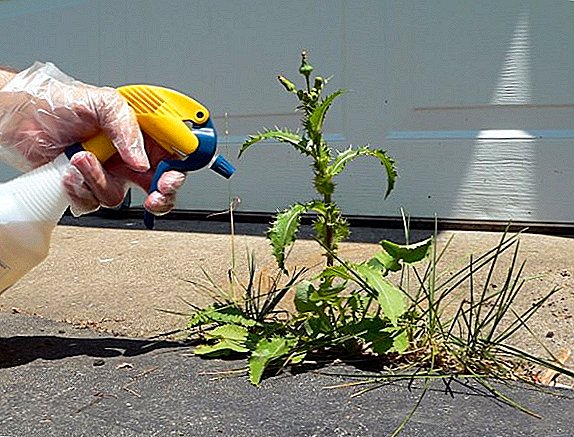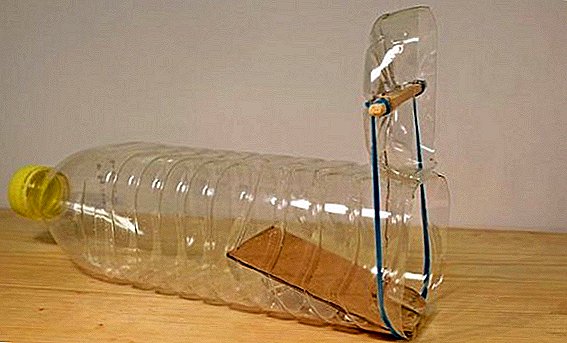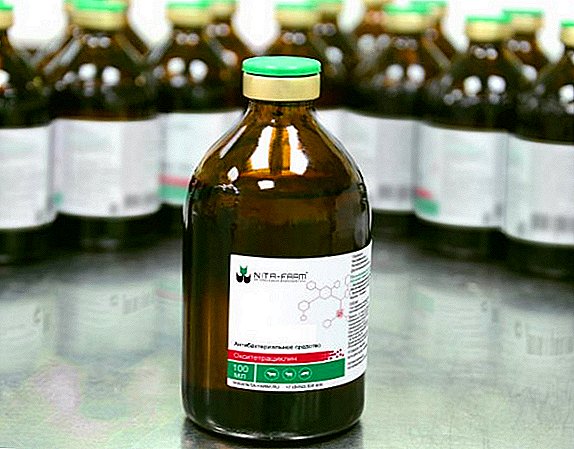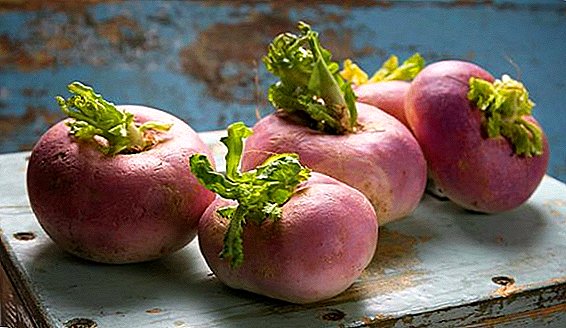 Growing a turnip in your plot does not pose any difficulties. The root crop is not whimsical and gives great harvests. Today both table and fodder varieties of turnips are grown.
Growing a turnip in your plot does not pose any difficulties. The root crop is not whimsical and gives great harvests. Today both table and fodder varieties of turnips are grown.
Site selection and soil for turnips
Turnip prefers moderate temperatures and intense heat only hurts him. Therefore, for the root suitable plot with penumbra, so that during the heat it was protected from the sun. Turnips can grow in cool summers with heavy rainfall. LIt is best suited for lowland places with good moisture, but without stagnant moisture. Lack of moisture will reduce seed germination, rooting, development and growth of the plant, and an overabundance will lead to the appearance of rot.
 By virtue of its unpretentiousness, the described plant can grow on any soils, but the largest and highest-quality yields can be obtained by planting turnips on sod-podzolic soils or cultivated peatlands.
By virtue of its unpretentiousness, the described plant can grow on any soils, but the largest and highest-quality yields can be obtained by planting turnips on sod-podzolic soils or cultivated peatlands.
Did you know? Turnip was domesticated in the Bronze Age. This root crop was grown by ancient Scandinavians, equating it to bread. He was highly nutritious and gave a feeling of satiety.
Preparatory work
To obtain a good turnip crop when grown from seed, it is necessary to properly prepare the soil for planting. All the preparatory work carried out in the fall. The soil at the site is carefully and deeply dug up, fertilized with rotted manure (one third of a bucket per square meter). Fresh manure should not be used. You can add mineral fertilizer to organic fertilizer: for example, 400 grams of nitrophoska is enough for 1 square meter. Phosphate and potassium compounds are generally not recommended to be added, and nitrogen can only be added under the precursor. Seeds at the root are not large, but to make them fit well into the ground, they are mixed with sand when planting.
The best predecessors for turnips
 Turnip is a root vegetable, which is often called fodder turnip, although there are also table varieties. Turnip biennial plant, family cabbage. That is why it can not be planted after cabbage or other cruciferous. Planting after such plants is possible only after four years.
Turnip is a root vegetable, which is often called fodder turnip, although there are also table varieties. Turnip biennial plant, family cabbage. That is why it can not be planted after cabbage or other cruciferous. Planting after such plants is possible only after four years.
For turnips, the best predecessors are: strawberries, beets, spring grain and winter crops, annual herbs.
Interesting! The largest turnip was grown by a pair of Robb farmers; it weighed 17.7 kg. The record was recorded at the fair near the city of Palmer in 2004 and is listed in the Guinness Book of Records.
Sowing turnip seeds in open ground
When sowing turnips in open ground, about three kilograms of seeds are taken per hectare of land, the reserve is made to a depth of two centimeters, and a distance of half a meter is left between the rows.
Spring sowing
Spring sowing of seeds is carried out at the end of spring (end of April - beginning of May). Sow on the outskirts of the garden warmed up by the sun and with good humidity.
Summer seeding
 Summer sowing of turnips is carried out in early July. Usually during this period, turnip seeds are sown after harvesting winter crops.
Summer sowing of turnips is carried out in early July. Usually during this period, turnip seeds are sown after harvesting winter crops.
Caring for turnips on the site
Turnips are easy to grow and care involves the same procedures as when growing other garden crops.
Watering the soil
During the period of active growth and development of turnips, regular watering is necessary, after which it is desirable to loosen. Do not overdo it with moisture, and do not allow drought, the soil around the root should be moderately wet. Turnips without enough watering will taste bitter. Adjust the frequency of watering, focusing on rainfall, on average, there should be two waterings per week.
Important! Try to water so as not to wash off the soil covering the upper part of the root, as if left without shelter, it will turn green and lose nutrients.
Dressing turnip
 During the period of active growth, turnips are fed with a solution of bird droppings with water (1:15). If you are not able to apply organics, use nitrophoska. Fertilize turnips need twice per season. Feed turnip responds well to the additional introduction of copper, boron and manganese, after which the soil in the garden bed should be well loosened.
During the period of active growth, turnips are fed with a solution of bird droppings with water (1:15). If you are not able to apply organics, use nitrophoska. Fertilize turnips need twice per season. Feed turnip responds well to the additional introduction of copper, boron and manganese, after which the soil in the garden bed should be well loosened.
Important! If your root grows on fertile and nutritious soil, you can do without supplements.
Turnip harvesting and storage
The yield of turnips with proper care will delight any farmer. In small areas, roots are harvested by hand, on large farmer fields with the help of technology. Before harvesting the plants are cut and fed to cattle. Then, using the diggers or forks, they dig up the vegetables themselves, throwing them aside. After that, all root crops are harvested, shaken off the ground and dried.
To store turnips clean in the cellar with a temperature of + 1 ... +2 ° C.
How to protect turnips: pests and diseases
 Turnips are prone to diseases such as blackleg, keel, mosaic and vascular bacteriosis. The most dangerous parasites that plague the plant are cruciferous fleas, flies, aphids and rape bugs.
Turnips are prone to diseases such as blackleg, keel, mosaic and vascular bacteriosis. The most dangerous parasites that plague the plant are cruciferous fleas, flies, aphids and rape bugs.
You can get rid of turnip pests using traditional methods: garlic extract, marigold and calendula extract, a solution of ash. Of the chemical drugs help "Aktellik" and "Aktara". Root crops will get rid of diseases with fungicides: "Fitosporin", "Fundazol", "Quadris", and the best prevention for the culture is respect for crop rotation.
From this article you have already learned how to grow turnips, and you probably realized that this is not only fodder culture. Root plants can significantly diversify your diet, because they are added to salads and main dishes. In addition, this product has healing properties.


